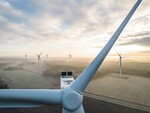News Release from WindEurope
Wind Industry Profile of
Offshore wind and fisheries: a win-win relationship is essential for the energy transition
This was the title of an event organised by the European Parliament’s Committee on Fisheries (PECH). The answer to this question, of course, is yes – but the happy coexistence of offshore wind and fisheries require specific conditions. European institutions now need to connect stakeholders and provide a dedicated place for sharing best practices and solutions.
The context is important here. Offshore wind is essential to the decarbonisation of Europe’s energy mix. Today Europe has 20 GW of offshore wind. But the European Commission estimates that we need 400-450 GW of offshore wind if Europe is to reach net-zero carbon emissions by 2050. Europe needs massive shares of offshore wind – but this growth of offshore wind will only be possible through collaboration with other users of the sea.
There are many possible synergies between wind energy and the fishing sector. And we already have examples of the two industries working together, side-by-side. Fishing within wind farms is allowed in some markets. In other markets there are compensation schemes for disruption during wind farm construction. Offshore wind farms also offer opportunities for alternative employment when fishing is restricted or fishing quotas are exhausted. This includes jobs in guarding and safety roles, as well as bird- and mammal- watch for environmental monitoring.
Ultimately, co-location options depend on site-specific characteristics – such as ecological importance and park layout – and site management plans. This is why collaborative approaches are key. Early dialogue, communication and clear safety rules could allow the two sectors to share the space at sea. Maritime Spatial Planning is the key-tool to improve cross-sector cooperation and thus minimise spatial conflicts. Long-term options for multiple potential uses should be tackled at an early stage in the planning process and discussed systematically with the fishing sector.
This is the time to act: the climate crisis means that time is already an issue. All stakeholders in the seas need to integrate one another’s interests and share best practices in order to make the energy transition a success.
The wind industry is ready to play its part.
- Source:
- WindEurope
- Author:
- Press Office
- Link:
- windeurope.org/...
- Keywords:
- fisheries, PECH, relationship, offshore, wind farm, rules, on-site, fishing, marine, wildlife, , onitoring, construction


























